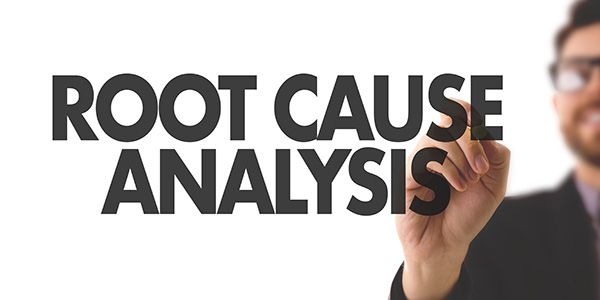Beware Tech Solutionism and How to Avoid it
We all like solutions, right? Problems are troublesome things and solutions make them go away. Well, yes and no.
Some solutions address most of a problem. A majority solve a portion, and a few do not solve their problems or might even cause new ones.
Just ask Minnesota citizens who faced long lines, incorrect fees, and received duplicate plates and tabs when the $93M Driver’s License and Renewal System (MNLARS) was launched in 2017. The State had to spend millions more to patch the worst of the problems.
Some “solutions” even get scrapped before they are ever implemented or shortly thereafter. For clarification, I am not referring to the kind of failing fast that innovation can sometimes cause but the mistaken solutions that should never have been launched. To illustrate, Minnesota has now decided to replace MNLARS with packaged software after spending over $100M on the system.
What I want to explore here are the consequences of “tech solutionism” or relying too heavily on technical solutions to solve all business problems. And not just the consequences but also three things to help avoid or at least minimize the negative outcomes.
The issue of tech solutionism can be defined as “the belief that every problem has a solution based in technology”[1]. In other writings I have railed against “jumping to solutions,” which is a similar phenomenon. The belief in tech solving everything is understandable as technology has evolved over decades and especially with the emergence of web sites, apps, and artificial intelligence (AI). The rapid rise in AI might instill a false sense of confidence perhaps because, given enough data and machine learning, it might appear that our solutions are able to do what humans should or could be doing.
There are a number of pitfalls to an over-reliance on technology to solve all problems.
- Masking Root Causes. I have long been a proponent of defining problems and getting to root causes before we apply solutions. As one article puts it, “In fact, the fanfare around these [AI] projects smacks of tech solutionism, which can mask root causes and the risks of experimenting with AI on vulnerable people without appropriate safeguards.[2]”
- Potentially biased data. Solutions are only as good as their data and “… the current state of the art is pretty bad when applied to global populations. Researchers have found that facial recognition software, in particular, is often biased against people of color, especially those who are women.” [3]
- Costly. New technology invariably causes problems with its use and introduces a learning curve. Even when technology is easy to use, integrating it into current processes can be difficult.[4] Digital transformation is important for competitiveness, but “going digital“ for its own sake and not actually solving problems will waste time and money.
- Security issues. New technology brings added security threats, especially for web- or app-based solutions. With additional reliance on big data, protecting it and providing privacy is even more important.[5]
- Do we need perfection? Many of us know by experience that problems can be solved in multiple ways, including non-automated solutions. Additionally, there is always the default option of doing nothing if solutions are too expensive or complex. As Evgeny Morozov puts it in his book To Save Everything, Click Here: The Folly of Technological Solutionism:
“…I believe that not everything that could be fixed should be fixed – even if the latest technologies make the fixes easier, cheaper, and harder to resist. Sometimes, imperfect is good enough; sometimes it’s much better than perfect.”[6]
So, what can we in business analysis and related functions do about these pitfalls? Here are three important activities we can do to reduce the amount and impact of tech solutionism:
[widget id=”custom_html-68″]
- Define the Problem. A common cause of “solution jumping” is due to incomplete understanding of the business problem. Often, business leaders and even some in our community take a kernel of a problem, find a software package or some other approach like AI or Agile and deem it will solve or help solve the problem. I have had countless conversations with people in our profession who have been brought in to implement a solution after it has been chosen, with little ability to change that direction.
I have often joked that we do not want to apply a $100 solution to a $10 problem, yet we know that happens in our organizations. A clear problem statement and data to support it can give us the problem’s impact. That in turn helps to focus on choosing the right path, including possibly doing nothing.
- Find Root Causes. Before getting to an appropriate solution, I have long known that determining the root causes of a problem is imperative. There are several techniques for doing this including Fishbone Diagrams, Five Whys, Pareto Charts, and others. Suffice it to say unless we know where and why something is broken, how can we apply an appropriate solution?
- Build Good Business Cases. A good business case can tie together the situation, its root causes, alternatives considered, the recommended best approach, the feasibility of that approach, and a cost-benefit analysis of the recommendation.
A final consideration (having myself had good business cases rejected) is this: no matter how disappointed we may be if our wonderful business case is not approved, the decision is not ours. Executives may still elect their preferred solution and choose to jump to their solution for reasons beyond our knowledge or control.
In summary, the above suggestions may seem simplistic and perhaps outdated. I firmly believe they will always play a part no matter how sophisticated technology becomes. Are they (and me) old-fashioned? Well, as the rock star Bob Seeger put it in his song “Old Time Rock and Roll”:
“Call me a relic, call me what you will
Say I’m old-fashioned, say I’m over the hill”[7]
And allow me to alter his lyric a little: “Just give me some of that old-time problem solving.”
[1] Solutionism definition: Macmillan Dictionary, undefined, Downloaded July 10, 2020
[2] “Opinion: AI For Good Is Often Bad” by Mark Latonero, Wired Magazine – undefined. Downloaded Nov. 18, 2019
[3] “Opinion: AI For Good Is Often Bad” by Mark Latonero
[4] “Why Is It So Hard to Solve Problems with Technology?” by Phill Jones, The Scholarly Kitchen – undefined. Downloaded April 6, 2020
[5] “The 11 biggest issues IT faces today” by Paul Heltzel, CIO.com – undefined. Downloaded April 6, 2020
[6] To Save Everything, Click Here: The Folly of Technological Solutionism by Evgeny Morozov, © 2013 by PublicAffairs, a division of the Perseus Books Group.
[7] “Old Time Rock and Roll” Lyrics by George Jackson, Thomas E. Jones III, and Bob Seeger















